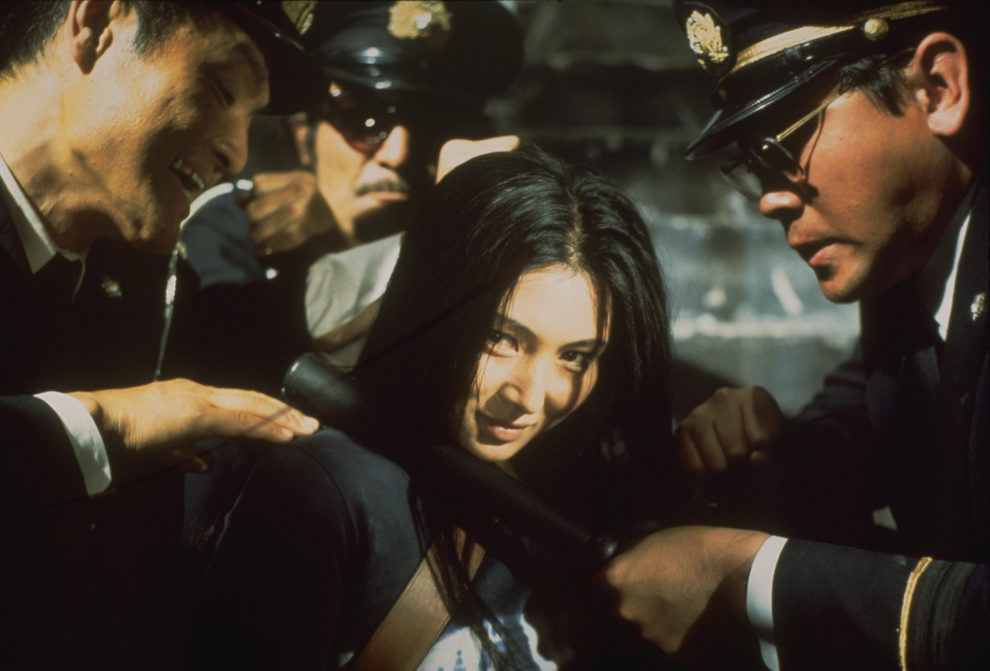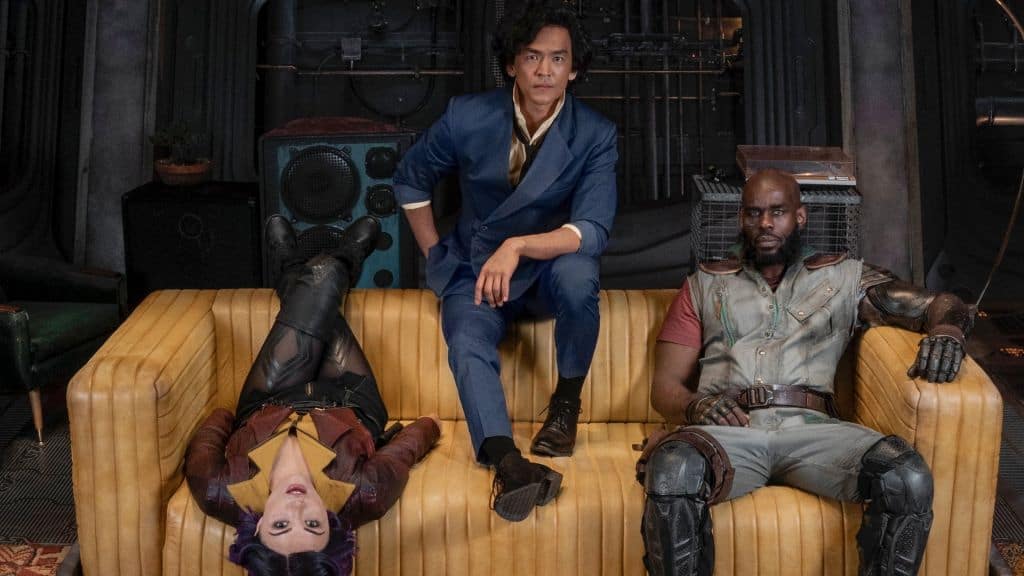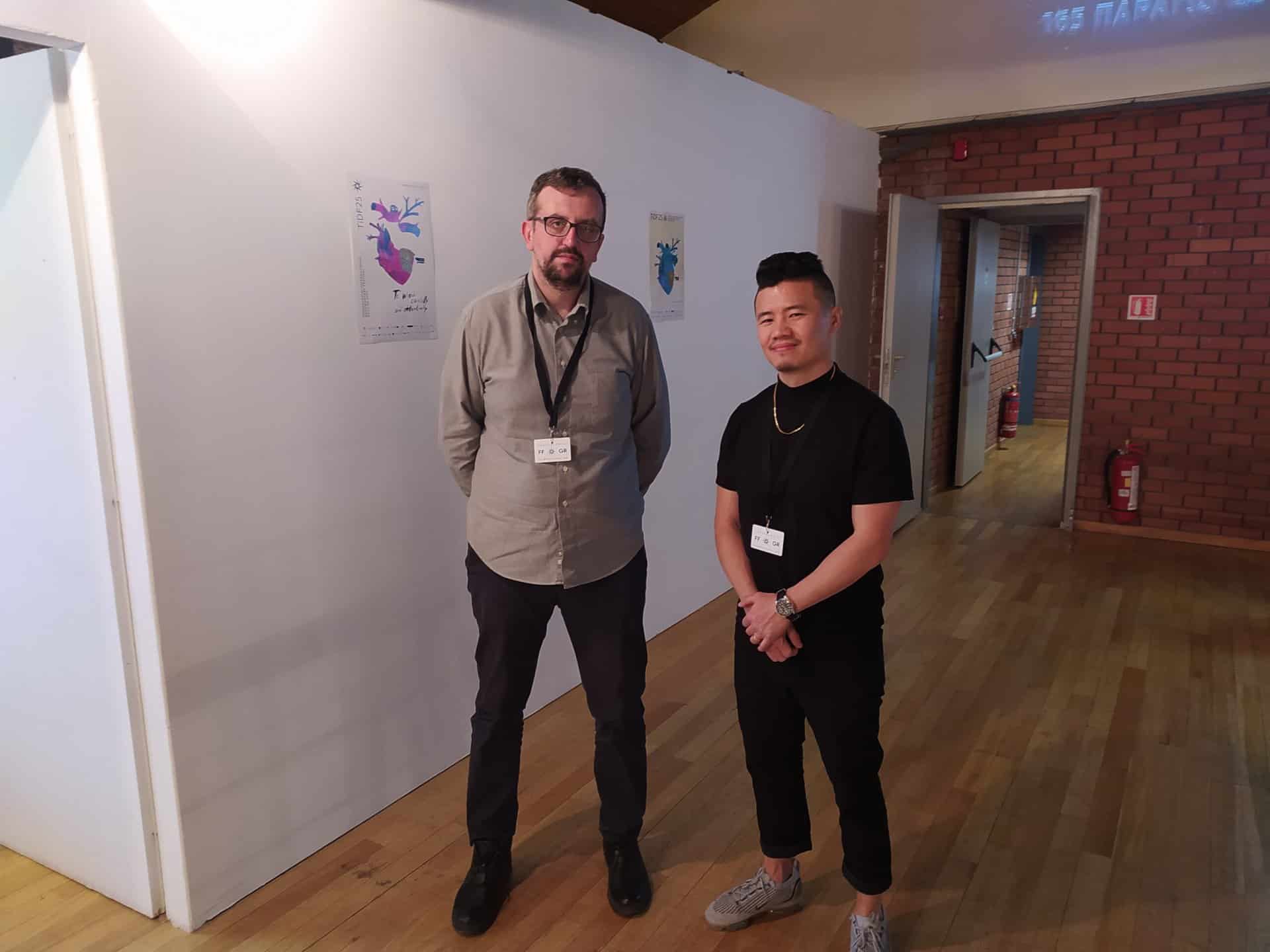When discussing Meiko Kaji, it is difficult not to rely on the word ‘iconic'. After all, what better term is there to describe a performer whose work has influenced and inspired countless filmmakers and who was once the face of female empowerment in Japanese cinema? First gracing the screen billed under her birth name, Masako Ota, Kaji has over a hundred acting credits to date and has also enjoyed a successful music career. However, her golden period undoubtedly came during the height of the exploitation boom in Japan, a time when cheap films characterised by sex and violence were produced en masse in an attempt to pry audiences away from their television sets. It was during this era that the feisty young actor earned herself a lasting place in the history of cult cinema.
Kaji had already appeared in over thirty feature films for Nikkatsu when she starred in what would be one of her most memorable series, “Stray Cat Rock”. Spearheaded by directors Yasuharu Hasebe and Toshiya Fujita, the set of anthology films follows the escapades of various young delinquents, with most narratives focused on female gangs. Initially a secondary player in these movies, Kaji soon took top-billing as she quickly established herself as one of the series' most compelling performers.

Throughout these films, we see many of the early acting characteristics that would come to define Kaji's career. Occasionally a bubbly and jovial figure, notably in the series' second film “Wild Jumbo”, the young performer later goes on to be a bold and empowered character in “Sex Hunter” and “Machine Animal”. In these later entries, Kaji takes centre stage as she dominates proceedings and goes toe-to-toe with heavy-hitting co-stars, including the likes of Tatsuya Fuji.
The films were released during a time when the second wave of the feminist movement was slowly picking up steam in Japan, and this comes through in much of the series' subtext. Kaji almost always plays a headstrong and controlling figure who is on equal footing with the various male gang leaders in the movies. There are, in fact, several occasions when she and her band of bad girls rescue their hapless male allies in what are reverse damsel in distress scenarios. Seeing Kaji in such a light helped her rise to fame and began to paint the picture of her as a hard-as-nails action star.
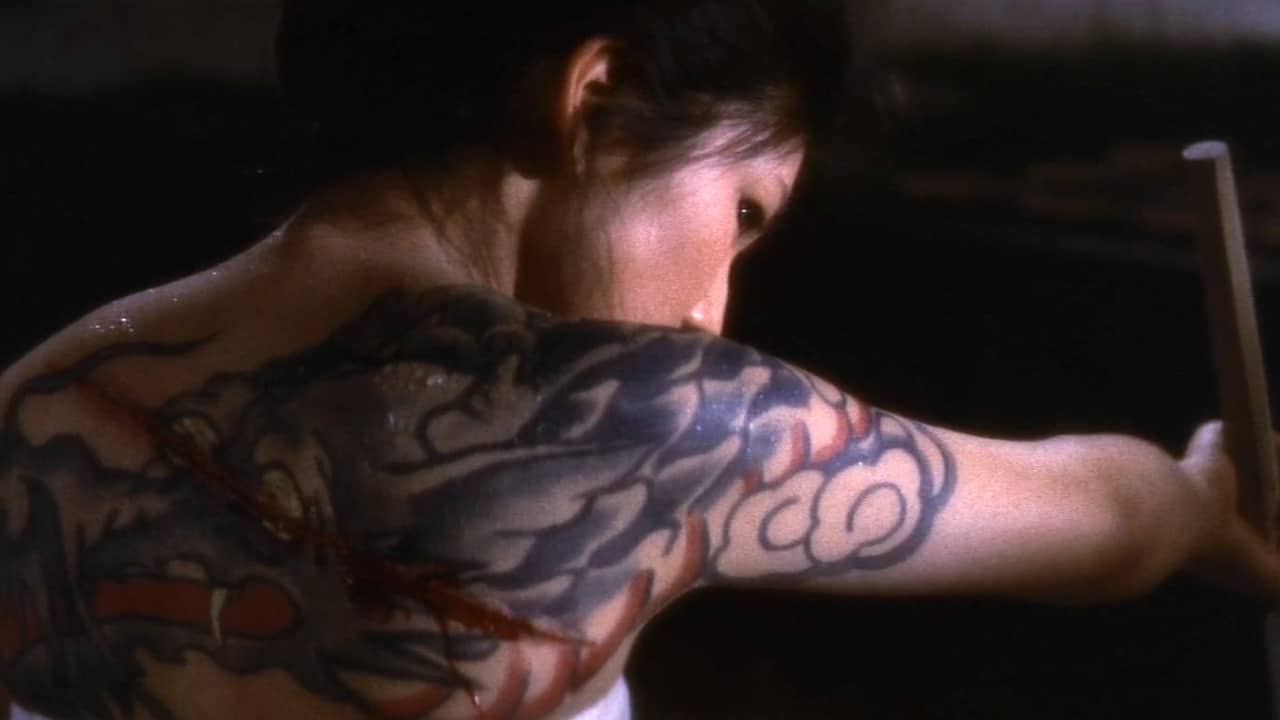
Totalling five films, all released between May 1970 and January 1971, “Stray Cat Rock” marked a vital step in Kaji's early career as a leading woman. Not long after the series' first entry, “Delinquent Girl Boss”, the actor took another major leap forward by taking the leading role in Teruo Ishii's “Blind Woman's Curse”. A yakuza flick set in the early 20thcentury; the film is a bizarre concoction of crime and horror that sees Kaji play Akemi, cursed leader of the Tachibana gang who is faced with turf wars, betrayal, and the wrath of a vengeful blind woman.
Though only 23 years old at the time of production, the fair-faced Kaji manages to stamp her authority down early on during a thrilling fight sequence where she comes across as a merciless figure. Despite not enjoying the lion's share of screen time, the actor reaffirms her domineering presence whenever she returns to the forefront of affairs. The movie no doubt contributed to the popular perception of Kaji as a fierce female warrior, not in the least because of the captivating final dual. This atmospheric climax provides glimpses of what Kaji had to come, with her refined swordsmanship and stoic manner becoming a mainstay of her later roles.
Shortly after the “Stray Cat Rock” series concluded, Nikkatsu focused its production efforts solely on ‘Roman Porno' films. Now with elevated stardom, Kaji had no intention of appearing in such projects and instead opted to leave the studio. However, it wasn't long before the uncompromising starlet found her way back into feature films through Toei, a studio where she would produce some of her finest work.

One of Kaji's early projects with Toei was the short-lived “Wandering Ginza Butterfly” series. Comprised of two films, both released in 1972, Kaji takes on the familiar role of a sprightly ex-gang leader, Nami, who, after a stint in prison, seeks work as a hostess in the seedy underbelly of Tokyo's Ginza district. Much like in “Blind Woman's Curse”, the “Wandering Ginza Butterfly” movies, directed by Kazuhiko Yamaguchi, see Kaji showing off her impressive range as she seamlessly switches from cheery and playful to ice cold and threatening in an instant.
Here, the actor cements her status as a capable leading lady, with her striking onscreen appearance and magnetic charisma making her the most enjoyable aspect of each movie. A charming snooker player in her first outing as Nami, she struts around with an air of confidence that wouldn't be possible were it not for her effortlessly cool persona. Somewhat overt comparisons to a snooker playing Paul Newman, through a poster that can be glimpsed in the background of later sequences, feel particularly apt here.
For the sequel, “She-Cat Gambler”, Kaji delivers the kind of performance that would only become more familiar in her later projects. Driven by vengeance for her murdered father, the sequel's Nami is a calm, collected, and ruthless figure, whose penetrative glare is enough to send shivers up the spines of hostesses and yakuza bosses alike. If the Nami of the first film is more akin to Kaji's delinquent types in the “Stray Cat Rock” movies, here she is closer to the character she would later portray in “Lady Snowblood”. Incidentally, during the first film's bloody climax, Kaji even dons a garb that is very similar to one worn by the aforementioned heroine.
While not performing up to Toei's expectations, the “Wandering Ginza Butterfly” movies nevertheless remain thoroughly entertaining in their own right. The series acts as an interesting transitional point between Kaji's more light-hearted roles of the past and the commanding ones she would go on to take in the coming years. Not to mention, the first entry also sees her partake in what is surely one of the most intense games of snooker ever put to screen.
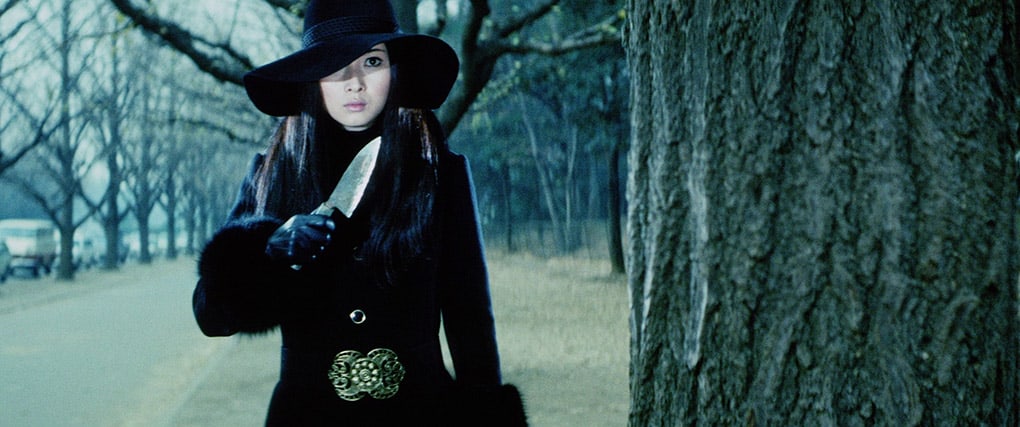
Sandwiched between these movies was the first entry in what was to become one of Kaji's most successful series, “Female Prisoner #701: Scorpion”. Matsu, often referred to as Scorpion, is unjustly imprisoned after being betrayed by her crooked cop lover. She finds, however, that vengeance won't be so simple, as she's subject to particularly harsh jail treatment at the hands of both guards and fellow inmates. This series would prove to be unlike anything Kaji had tackled before and push the actor to her limits.
Maybe more so than any of her prior works, the success of “Female Prisoner Scorpion” depended heavily on Kaji's performances. Comprised of four films, the series is easily the most exploitative that the actor starred in during this period of her career, with the all-female prisons and extreme punishments within them clearly targeting a predominantly male audience. With this angle would come hardships for Kaji, who puts in what must have been physically exhausting performances. She spends a sizeable portion of the first film tied up on the floor of a dank cell, and throughout the series, would be forced to endure further discomfort that only continues to escalate.
Perhaps what's most remarkable about Kaji's performances in these films is how much they rely on her physicality. Matsu is essentially a mute protagonist, with the character barely uttering a word in each movie. Instead, the much-feared Scorpion does most of the talking with her mannerisms, movements, and incredibly expressive eyes. Kaji's now famously icy stare is prominently used throughout this series, with the actor draining any trace of sympathy from her emotionally void demeanour. Such performances harken back to those of the silent era and demonstrate Kaji's versatility as an actor.
It also seems that Kaji wasn't too dissimilar from her no-nonsense protagonist in real life, at least when it came to choosing parts. In a similar fashion to how she left Nikkatsu earlier in her career, the actor allegedly turned down the role of Matsu initially due to her characterisation. However, this passionate refusal led to her collaborating with Toei to re-work the protagonist into what we have today. Flexing her star status in such a manner shows that Kaji's involvement in moulding this powerful symbol of female action cinema went further than her exceptional performances.
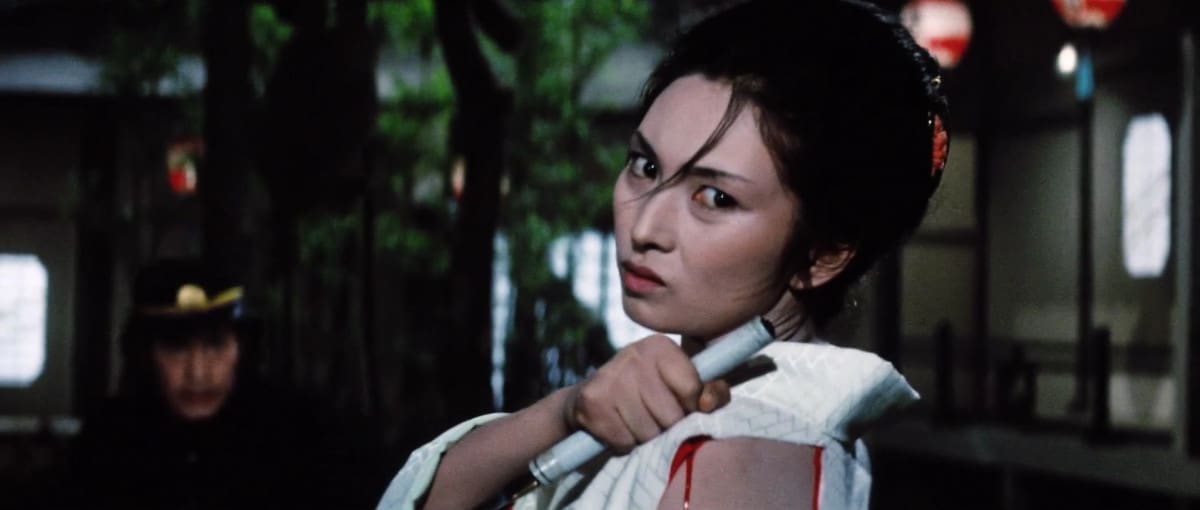
The role of Matsu is one of two that Kaji is best remembered for, with the second being that of the indomitable Yuki in the “Lady Snowblood” duology. The project saw Kaji reunite with director Toshiya Fujita, who helmed the Toei produced films that have since gone on to become some of the most recognisable in Japanese exploitation cinema. The two movies arguably mark the pinnacle of Kaji's performing career and see the actor embody a woman whose sole purpose in life is revenge.
In many ways, Yuki is a culmination of the many characters Kaji had portrayed in the past. A beautiful yet intimidating figure, there's a lot of repressed feelings hidden behind her stony face. Love, hate, joy, and sadness are all pushed to the depths of Yuki's soul as she focuses her mind on being an instrument of revenge. There are several moments in which some inner-conflict shines through as she holds back tears or battles with her more sympathetic feelings. Kaji's restrained performance means that, yet again, she rarely needs to say anything for much of this self-doubt to be made clear.
Of course, you can't talk about the “Lady Snowblood” series without mentioning the violence in either film as well as Kaji's role in it. Evoking jidaigeki imagery from Japanese cinema's golden age, Yuki gracefully carves through enemies as she glides across the snow, staining it with sharp bursts of gloriously red blood. The same is the case for the sequel, “Love Song of Vengeance”, in which the assassin nonchalantly dashes aside enemies from all angles, albeit in a more jaded manner. Kaji's smooth movements during these sequences are more akin to that of a dancer, with her swift dispatching of foes being incredibly pleasing to the eye.
Keen-eared viewers will note that the main theme song, “The Flower of Carnage”, was also used towards the end of Quentin Tarantino's “Kill Bill Vol.1”, a movie openly influenced by Fujita's film. The song, performed by Kaji, is just one of the many themes the actor produced for her projects, a few of which are for features already discussed. As if her acting prowess wasn't already enough, Kaji brings even more to what is an already stellar film with her haunting revenge hymn.
By far and away her most popular feature, “Lady Snowblood” is the jumping on point for many audiences being introduced to Kaji's work. The image of Yuki, hair up and dagger raised, in a bloodstained kimono, has become inseparable from the exploitation era in which it was produced.
Shortly after the “Lady Snowblood” movies, Kaji took a step back from feature filmmaking, instead accepting smaller parts for the remainder of the 1970s. This change was partly due to the fact that, despite appearing in several films a year, the star was not very well paid, a typical situation for many Japanese actors at the time. However, walking away from the limelight was by no means a step down for the performer, as she continued to pursue her already successful music career and make regular television appearances.
Meiko Kaji's significance when it comes to Japanese cinema's exploitation years is difficult to overstate. Through her extraordinary ability, she was able to take what on paper were blank slate characters and turn them into truly iconic heroines. The fact that Kaji's work has endured and remains relevant today is not only a testament to the quality of the films she appeared in but also her performances in them, which continue to evoke a passionate response from contemporary audiences. She remains an invaluable figure in the history of Japanese cinema, a flower of carnage who remains the ultimate face of female vengeance.


